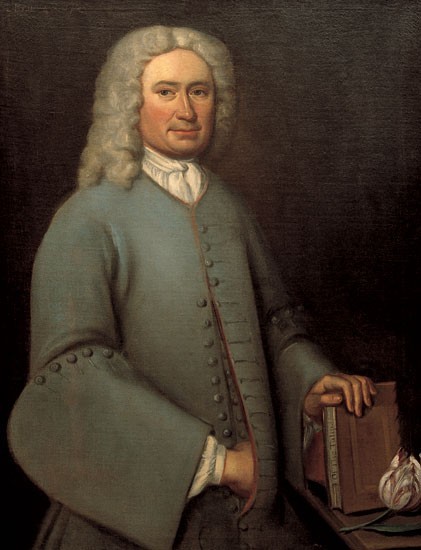
Charles Bridges, John Custis IV, 1725. Oil on canvas. 36" x 27". (Courtesy, Washington-Custis-Lee Collection, Washington and Lee University, Lexington, Virginia.)
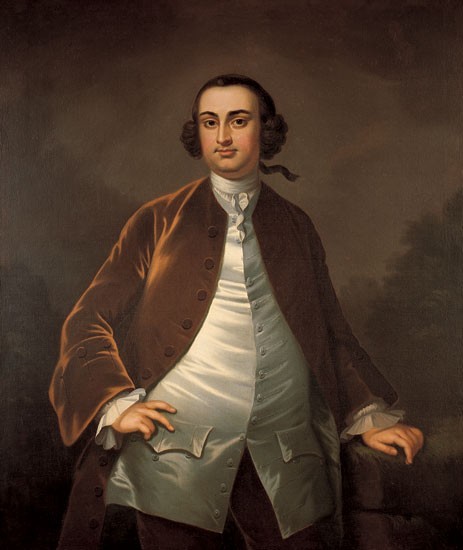
John Wollaston, Daniel Parke Custis, 1757. Oil on canvas. 50" x 40". (Courtesy, Washington-Custis-Lee Collection, Washington and Lee University, Lexington, Virginia.)

John Wollaston, Martha Dandridge Custis,1757. Oil on canvas. 50" x 40". (Courtesy, Washington-Custis-Lee Collection, Washington and Lee University, Lexington, Virginia.)
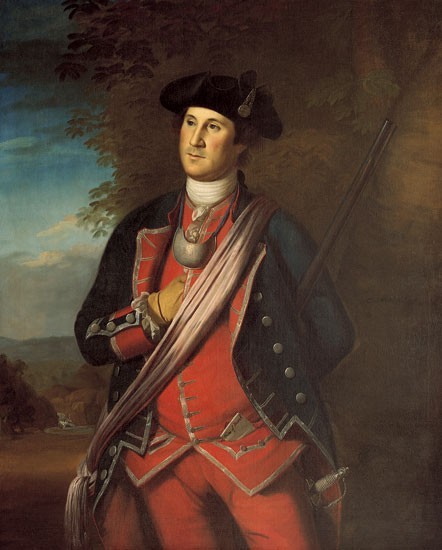
Charles Willson Peale, Washington as Colonel of the Virginia Regiment, 1772. Oil on canvas. 50 1/2" x 41 1/2". (Courtesy, Washington-Custis-Lee Collection, Washington and Lee University, Lexington, Virginia.)

Invoice from Peter Scott of Williamsburg, Virginia, to Daniel Parke Custis of New Kent County, Virginia, for work done in 1754 and 1755, dated June 9, 1756. (Courtesy, Colonial Williamsburg Foundation; photo, Hans Lorenz.)

Peter Scott, bureau dressing table, Williamsburg, Virginia, 1754. Mahogany with oak and yellow pine. H. 32 5/16", W. 35 3/4", D. 19 3/4". (Courtesy, George Washington’s Mount Vernon, Mount Vernon, Virginia; photo, Hans Lorenz.) The missing brackets flanking the prospect door were replaced by Colonial Williamsburg conservators and are based on both physical evidence and surviving examples of other bureau dressing tables by Scott. The reproduction drawer hardware mimics the size of the missing originals. Its design was taken from hardware on other case furniture attributed to Scott. The feet and door hardware are original.
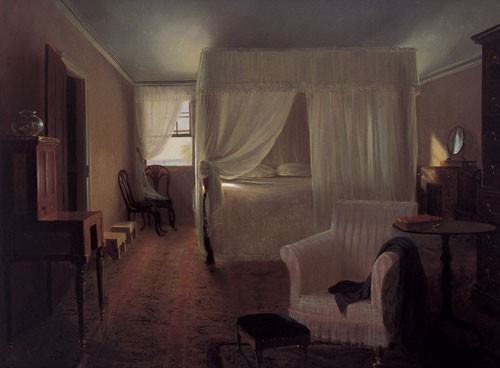
John Gadsby Chapman, The Chamber of Washington in which He Died with All the Furniture as It Was at the Time—Drawn on the Spot by Permission of Mrs. John Washington of Mount Vernon, 1835. Oil on canvas. 21 9/16" x 29". (Courtesy, Homeland Foundation, Incorporated, Amenia, New York.)
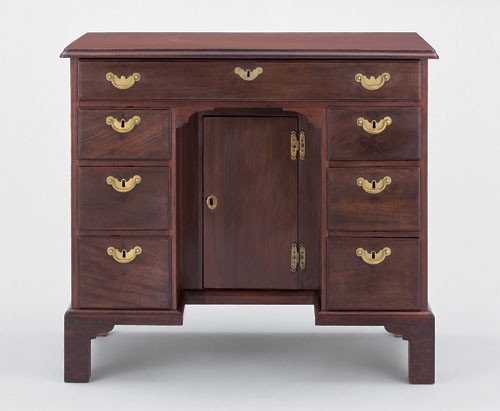
Bureau dressing table attributed to Peter Scott, Williamsburg, Virginia, 1745–1760. Mahogany with oak and yellow pine. H. 31 5/8", W. 36", D. 23 1/2". (Courtesy, Colonial Williamsburg Foundation; photo, Hans Lorenz.) The feet, top molding, and drawer hardware are recent restorations. The door hardware and one of the brackets are original.
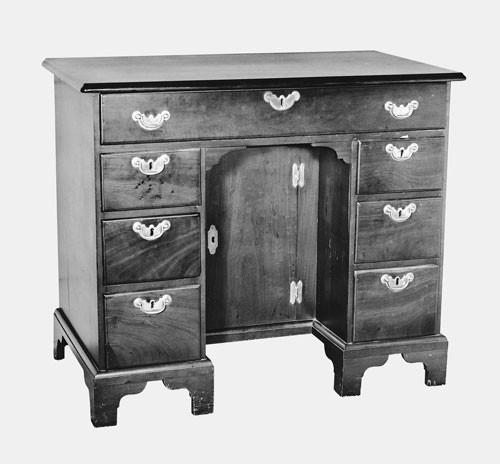
Bureau dressing table attributed to Peter Scott, Williamsburg, Virginia, 1745–1760. Mahogany with oak and yellow pine. H. 30 1/2", W. 36 1/4", D. 20 1/4". (Private collection; photo, Museum of Early Southern Decorative Arts, Old Salem Museums & Gardens.) The hardware, brackets, and base molding are original; the feet are old replacements.
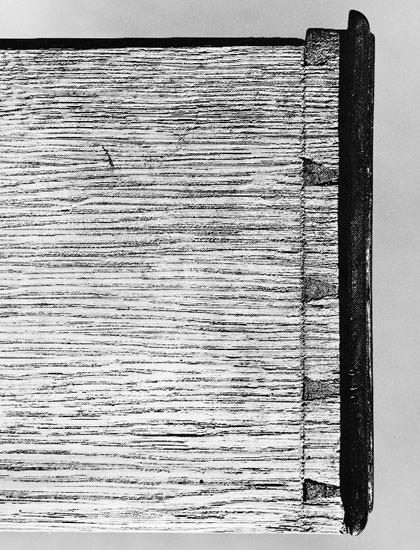
Detail of a drawer side from the bureau dressing table illustrated in fig. 6.
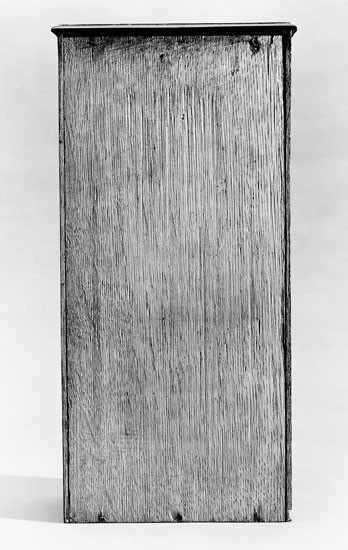
Detail of a drawer bottom from the bureau dressing table illustrated in fig. 6.
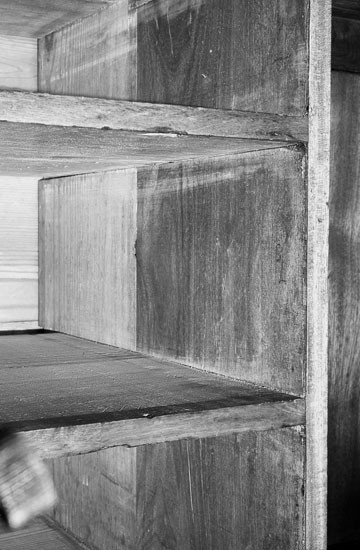
Detail of the dustboard construction on the bureau dressing table illustrated in fig. 8.
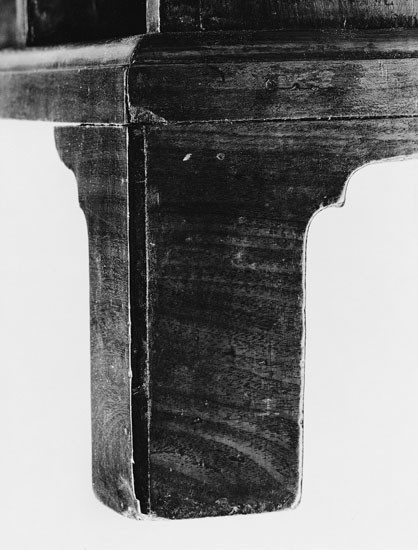
Detail of a bracket foot on the bureau dressing table illustrated in fig. 6.
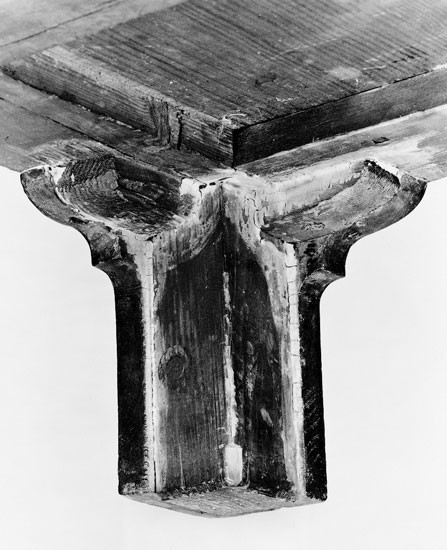
Detail of the original foot blocking on the bureau dressing table illustrated in fig. 6.
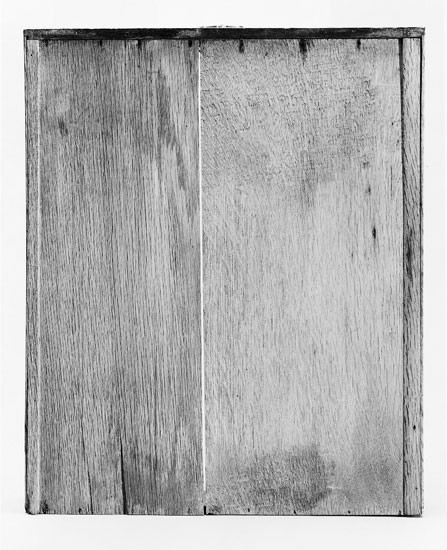
Detail of a drawer bottom from the desk-and-bookcase illustrated in fig. 16.
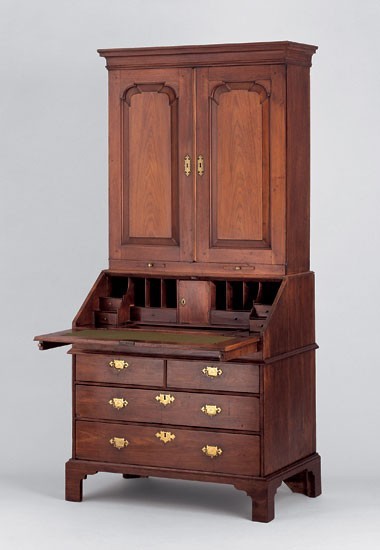
Desk-and-bookcase attributed to Peter Scott, Williamsburg, Virginia, 1722–1730. Black walnut and black walnut crossbanding with oak and yellow pine. H. 82 3/4", W. 39 3/8", D. 24". (Courtesy, College of William and Mary, gift of Caroline Baytop Sinclair; photo, Hans Lorenz.) The feet, base molding, and drawer hardware are inaccurate modern replacements. The surbase molding was replaced by Colonial Williamsburg conservators. The escutcheons and iron knife hinges on the bookcase doors are original.

Grace Coxed and Thomas Woster, desk-and-bookcase, London, England, 1719–1725. Burl maple and rosewood veneers with white metal inlays. Secondary woods and dimensions not recorded. (Adam Bowet and Laurie Lindey, “Labeled Furniture from the White Swan Workshop in St. Paul’s Churchyard [1711–35],” Furniture History 35 [2003]: fig. 15.) This piece bears the label used by the Coxed and Woster firm from 1719 to 1725. Its current location is unknown.
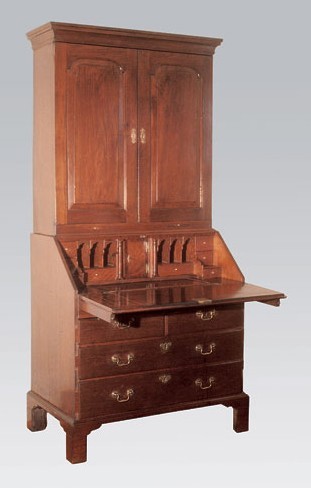
Desk-and-bookcase attributed to Peter Scott, Williamsburg, Virginia, circa 1735–1745. Black walnut and black walnut crossbanding with oak and yellow pine. H. 83 3/4", W. 41 1/4", D. 24". (Private collection; photo, Museum of Early Southern Decorative Arts, Old Salem Museums & Gardens.) The feet and the drawer escutcheons are original; the pulls are later replacements.
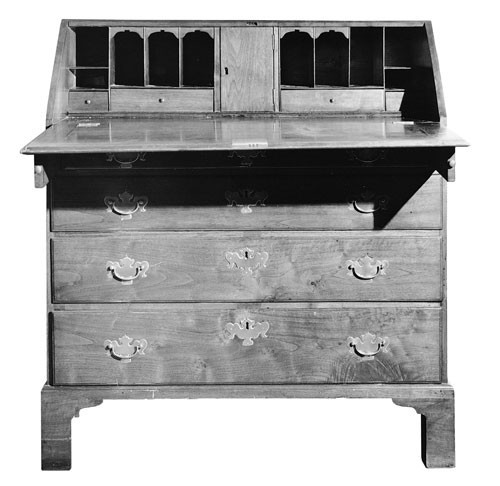
Desk attributed to Peter Scott, Williamsburg, Virginia, 1745–1755. Black walnut with oak and yellow pine. H. 42 1/2", W. 40", D. 20 7/8". (Private collection; photo, Museum of Early Southern Decorative Arts, Old Salem Museums & Gardens.) The feet are largely original; the drawer pulls and escutcheons are old replacements.
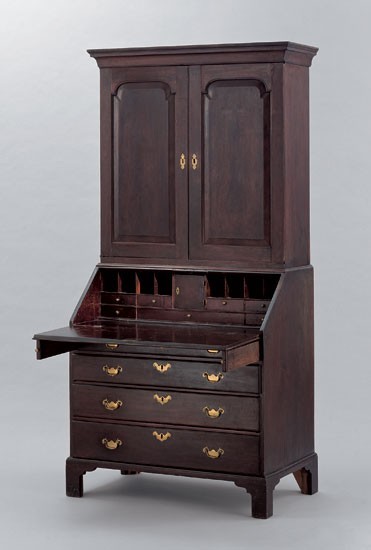
Desk-and-bookcase attributed to Peter Scott, Williamsburg, Virginia, 1745–1755. Black walnut and mahogany crossbanding with oak and yellow pine. H. 84", W. 42 1/8", D. 24 1/2". (Courtesy, Colonial Williamsburg Foundation; photo, Hans Lorenz.) The front feet and the drawer hardware are original.

Desk-and-bookcase attributed to Peter Scott, Williamsburg, Virginia, 1765–1775. Cherry with oak and yellow pine. H. 83 3/8", W. 41", D. 24". (Courtesy, Colonial Williamsburg Foundation; photo, Hans Lorenz.) The feet and the drawer hardware are recent replacements based on physical evidence and surviving examples of other case pieces attributed to Scott.
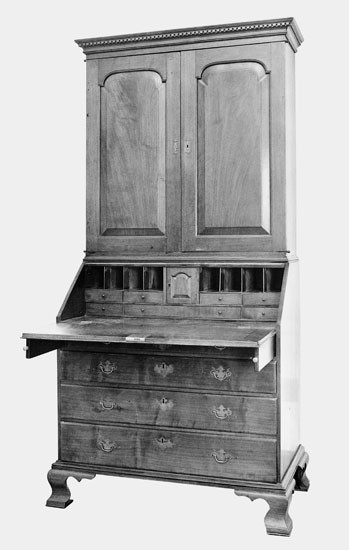
Desk-and-bookcase attributed to Peter Scott, Williamsburg, Virginia, 1765–1775. Black walnut with yellow pine. H. 83", W. 41 3/4", D. 24 1/4". (Private collection; photo, Museum of Early Southern Decorative Arts, Old Salem Museums & Gardens.) The drawer pulls and escutcheons are later replacements.
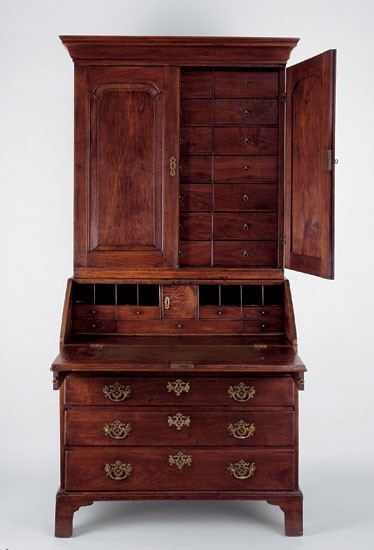
Desk and cabinet attributed to Peter Scott, Williamsburg, Virginia, 1750–1765. Black walnut with oak and yellow pine. H. 84 3/4", W. 40 1/2", D. 23 1/4". (Courtesy, Carlyle House Historic Park, Northern Virginia Regional Park Authority; photo, Gavin Ashworth.) In place of a standard bookcase, this desk is topped by a cabinet of small drawers behind paneled doors. The feet are partially restored; the hardware and cornice are recent replacements.
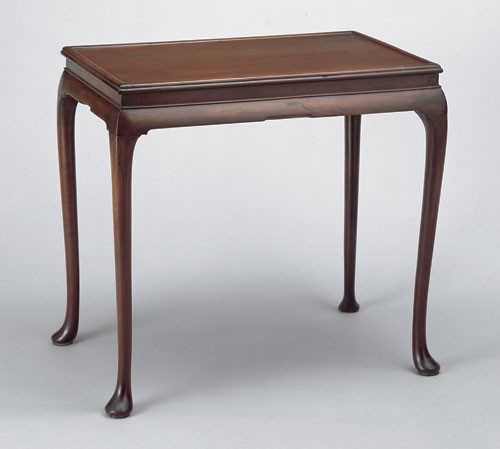
Tea table attributed to Peter Scott, Williamsburg, Virginia, 1722–1730. Mahogany with oak and yellow pine. H. 26 3/4", W. 29", D. 19 3/8". (Courtesy, Colonial Williamsburg Foundation; photo, Hans Lorenz.) The applied edge molding on the top is an early replacement.
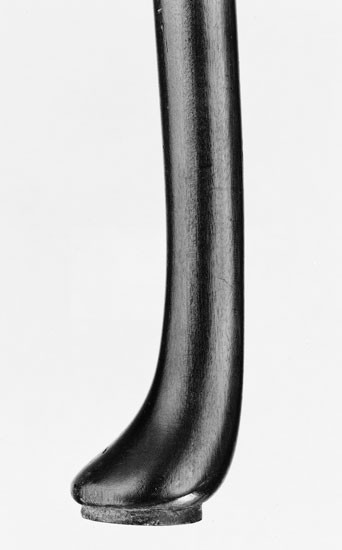
Detail of the leg and foot on the tea table illustrated in fig. 24.
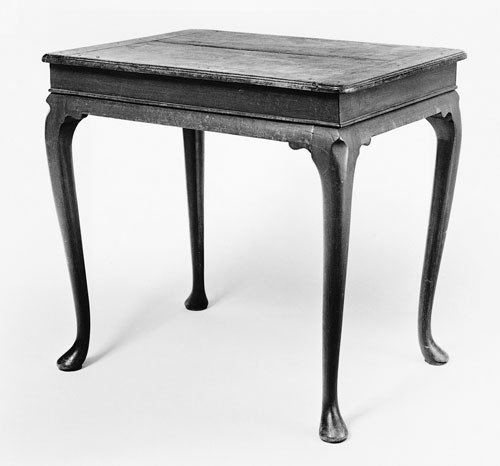
Tea table attributed to Peter Scott, Williamsburg, Virginia, 1730–1745. Black walnut. H. 25 3/16", W. 27", D. 20 1/16". (Private collection; photo, Museum of Early Southern Decorative Arts, Old Salem Museums & Gardens.) The top is an old replacement
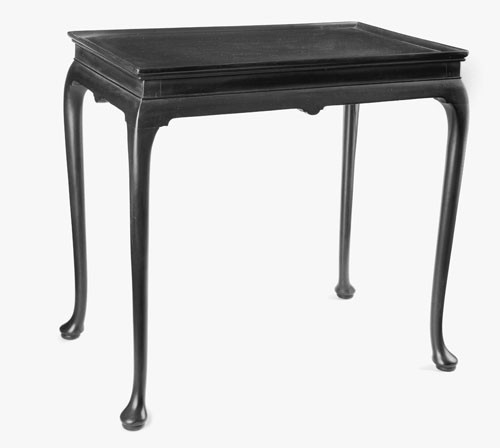
Tea table attributed to Peter Scott, Williamsburg, Virginia, 1745–1755. Mahogany with oak and yellow pine. H. 27 1/4", W. 29 5/8", D. 19 3/8". (Private collection; photo, Gavin Ashworth.)
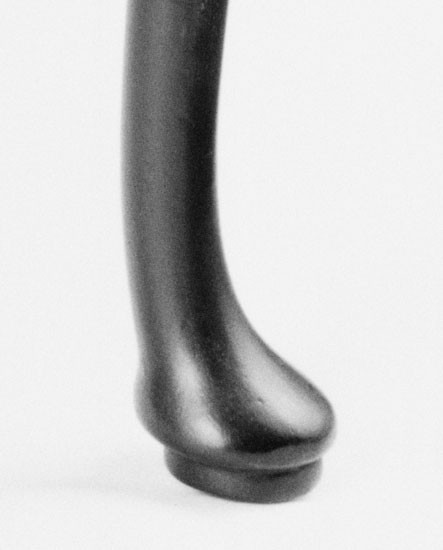
Detail of the leg and foot on the tea table illustrated in fig. 27.
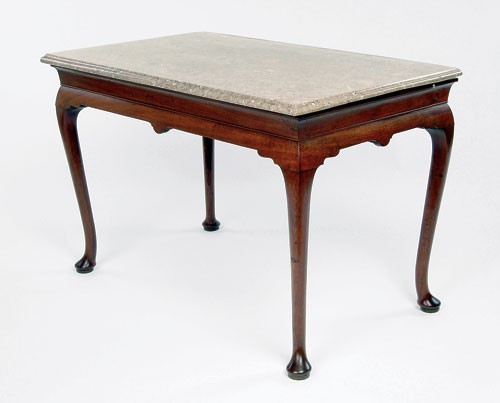
Sideboard table attributed to Peter Scott, Williamsburg, Virginia, 1745–1755. Black walnut with oak and yellow pine; marble top. H. 30", W. 44", D. 26". (Courtesy, Smithsonian Institution, National Museum of American History, Kenneth E. Behring Center.) The marble top is an old replacement.
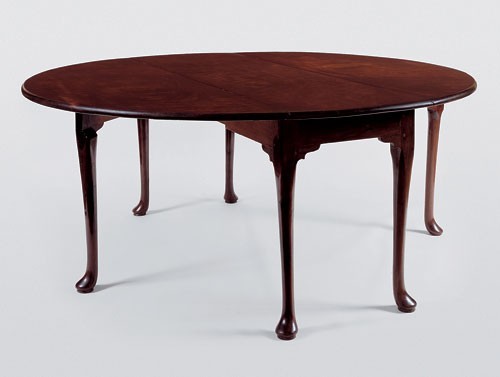
Dining table attributed to Peter Scott, Williamsburg, Virginia, 1722–1730. Mahogany with yellow pine and elm or hackberry. H. 28 3/4", W. 66 1/4", D. 71 1/4" (open). (Private collection; photo, Gavin Ashworth.) The table’s hinge rails are made of either elm or hackberry. These woods are seldom encountered in American furniture, but both were widely distributed through tidewater Virginia forests in the eighteenth century and both have many of the woodworking properties of oak.
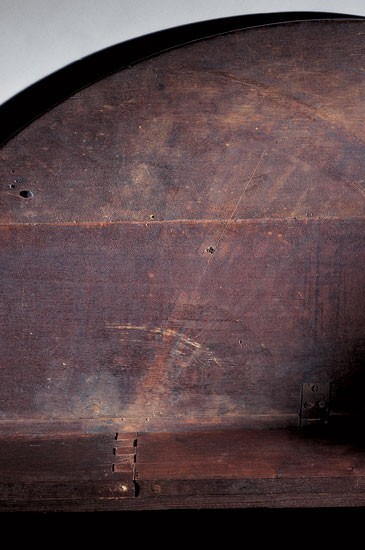
Detail of the pin on the underside of the dining table illustrated in fig. 32. Ony the stub of the pin survives.
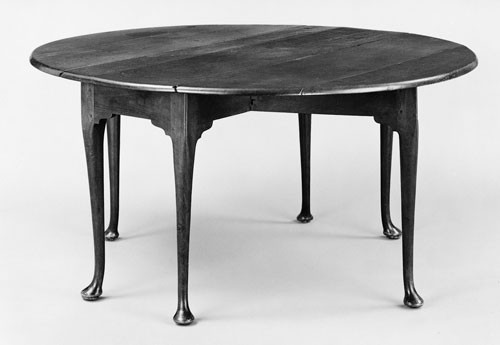
Dining table attributed to Peter Scott, Williamsburg, Virginia, 1745–1755. Black walnut with black walnut and yellow pine. H. 28 3/4", W. 60 3/4", D. 55 1/4" (open). (Courtesy, Colonial Williamsburg Foundation; photo, Hans Lorenz.)
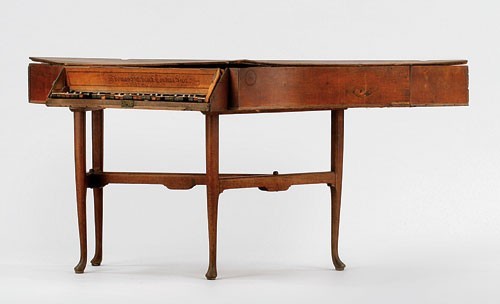
Thomas Hitchcock, spinet, London, England, ca. 1710. European walnut; unidentified conifer. Stand attributed to Peter Scott, Williamsburg, Virginia, 1725–1735. Black walnut. Dimensions of spinet and stand: H. 33 1/8", W. 72", D. 26". (Courtesy, Botetourt County Historical Society; photo, Hans Lorenz.) The lid, an early replacement made of American black walnut, may also be the work of Peter Scott.
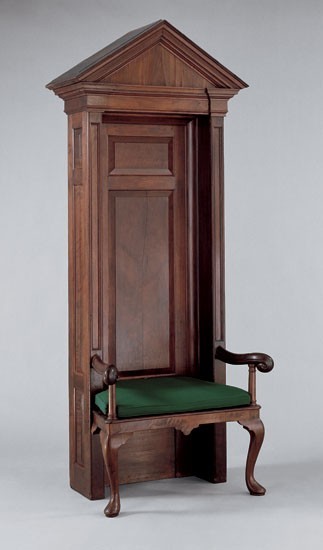
Ceremonial chair attributed in part to Peter Scott, Williamsburg, Virginia, 1730–1740. Black walnut with tulip poplar and yellow pine. H. 97 1/2", W. 39 5/16", D. 26 3/8". (Courtesy, Commonwealth of Virginia on long-term loan to Colonial Williamsburg Foundation; photo, Hans Lorenz.)
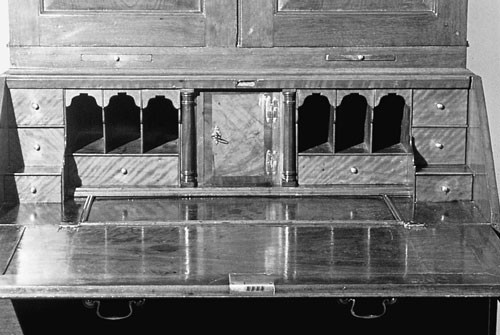
Detail of the writing compartment of the desk-and-bookcase illustrated in figure 18.
